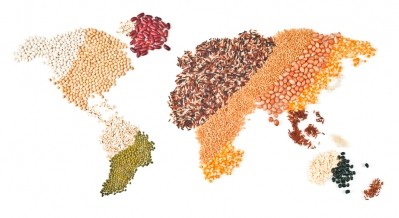There's plenty of room for botanical discovery, especially in finding new ingredients from familiar sources, experts say

To boldly go where no botanist has gone before
The question of whether new ingredients might arise from species that are as yet unknown to science is similar to the calculations astronomers make when trying to decide if intelligent life exists somewhere else in the universe and, if so, how many higher civilizations might might be expected. The result of this exercise depends to a great degree on beginning assumptions. To put this question in botanical terms, have all of the plants useful from a health perspective already been discovered?
“Many pharmacognosists believe that is true with regard to the higher plants,” said Roy Upton, founder and executive director of the American Herbal Pharmacopoeia. “So pharmacognosy has largely moved on to looking at marine life and algae.”
Mark Blumenthal, founder and executive director of the American Botanical Council takes a more expansive view, one that rests on the sheer volume approach some astronomers use to argue for the inevitability of the existence of other intelligent life.
“It could be that we have found all the new options for medicine from the botanical world, but looking at it from a strictly statistical view, my old mentor the late Norman Farnsworth (professor at the University of Illinois Chicago) used to say that botanists estimate that there are 250,000 species of vascular plants in the world. And at that time, in the 80s, about 5,000 of them had been well studied. You could find a compound tomorrow that might be the next AIDS cure or the next malarial drug. I think there are obviously a lot more chemicals hiding out in plants that could be useful,” he said.
New melodies from familiar notes
Whether the next wonder botanical remains to be discovered, there is a lot more to be done with the materials at hand, both Upton and Blumenthal agree. Some of this is a product of a renewed interest in traditional medicine systems, interest which received a big boost when a share of the Nobel Prize in Medicine in 2015 was given to Chinese researcher Tu YouYou for her discovery of antimalarial drug artemisinin, which was first derived form the plant Artemisia annua, or sweet wormwood, an herb employed in Traditional Chinese Medicine.
“She is the first person to get a Nobel Prize for basically doing pharmacognosy,” Blumenthal said.
“Over the last twenty years there has been a strong movement toward the modernization of Traditional Chinese Medicine,” Upton said. “This has particularly taken place in Hong Kong, because they’ve got a lot of money to do it. They’ll basically reverse engineer a traditional formula, look at the ingredients selectively and then try to say which of the ingredients having a certain effect. In doing that process they can find the synergisms and antagonisms.”
Upton said a fruitful area of research has been and continues to be looking at herbal ingredients for possible new indications other than their traditional uses. Some of these cross the regulatory line in this country differentiating supplements from drugs (in many areas of the world herbal medicines are their own regulatory category) but nevertheless can be a guide toward new uses of botanicals. And sorting through cultural differences in terms of herbal effects and appropriate endpoints will help inform the discovery process, he said.
“There are a lot of new discoveries coming out of old botanicals,” he said. “These botanicals haven’t been always well studied in the context of how they are used. For sure there are studies such as those using St John’s Wort for depression and measuring it against Prozac or whatever. That’s using it in the Western, magic bullet approach. Using ‘excessive liver fire’ as a diagnostic criterion is something a Western expert would balk at.”
Manufacturing advances
Michael McGuffin, executive director of the American Herbal Products Association, said that manufacturing advances have also added a wealth of new ingredients to the fold and that process will continue. Before his tenure at AHPA, McGuffin was an herbal formulator in his own right.
“For example, we have been using turmeric in our food and supplements for a long time. We are not going to discover a new species of turmeric. But we have seen innovation in the processing of turmeric and perhaps the discovery of new extracts of turmeric for use in dietary supplements,” he said.
Clarifying what bringing a new ingredient to market means in context of the New Die tray Ingredients draft guidance could go a long way toward sustaining that innovation trend, McGuffin said. The draft guidance, first published in 2010, has been in a revision process for years. Cara Welch, acting director of the Division of Dietary Supplement Programs at the Food and Drug Administration echoes previous office holders when she says an updated draft version will be published “soon.” It has been inferred this means in 2016, but that is not FDA’s official word. The industry and FDA have sharply disagreed on some aspects of the draft guidance, including what manufacturing steps constitute chemical alteration profound enough to warrant submission of new safety information on familiar botanicals.
“Take the case of paw-paw (Asimina triloba, a North American deciduous tree, the fruit of which has appeared as an ingredient in some supplements). It has certainly been an article used for food, but if someone wanted to make it more prominent in the marketplace and drilled down to a particular constituent of that fruit, what’s my obligation under the NDI guidance?
“We hope that we will get some clarification on the issue and not explanations of why FDA is right and we are wrong,” McGuffin said.















